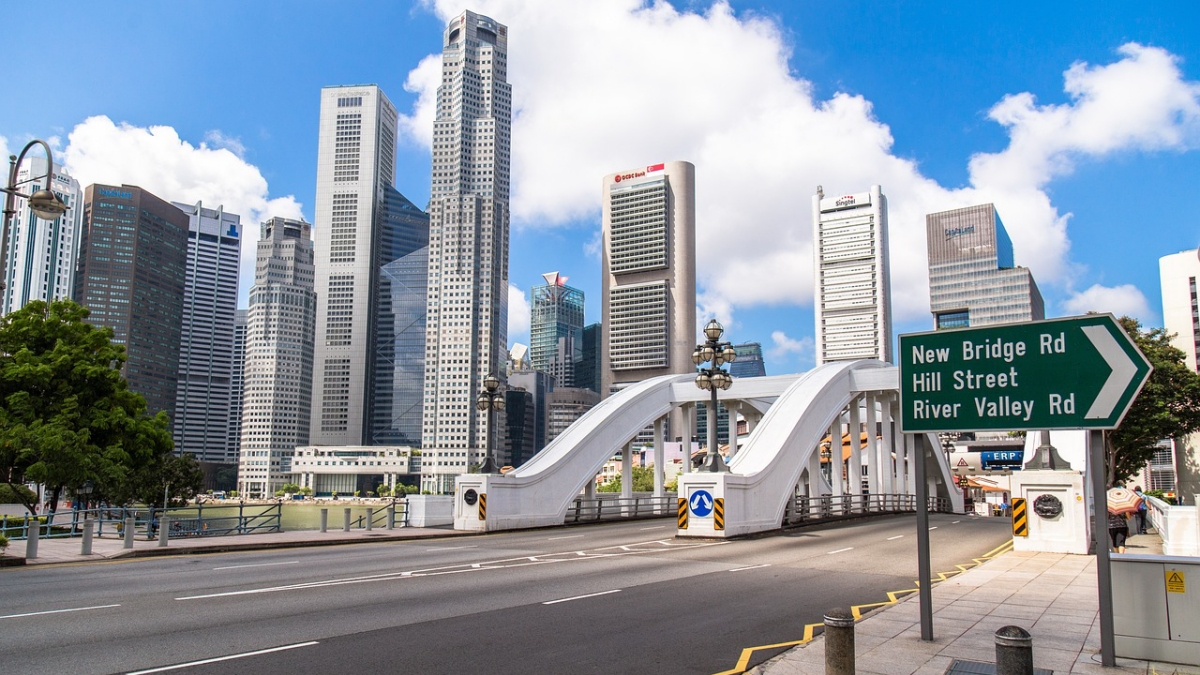As you navigate the bustling streets of Singapore, have you ever stopped to think about how the city’s transportation infrastructure is shaping the property market? From the Circle Line to the upcoming Cross-Island Line, Singapore’s ambitious infrastructure projects are transforming the way you live, work, and travel.
But what does this mean for your property investments? As you consider buying a home at Grand Dunman, it’s important to understand how these projects will impact property values in the years to come.
In this article, we’ll research into the intricate relationship between transportation infrastructure and property prices, and what it means for your future in Singapore.
The Current State of Transportation in Singapore
As you navigate the streets of Singapore, you’re likely to be impressed by the efficiency and reliability of the transportation system. But have you ever stopped to think about the intricate network that makes it all possible?
Overview of the Transportation Network
One of the key factors contributing to Singapore’s success is its comprehensive transportation network. The city-state boasts a well-integrated system that combines roads and railways to provide seamless connectivity across the island. You can easily hop on the Mass Rapid Transit (MRT) system which spans over 150 kilometers and connects you to various parts of the city. Alternatively, you can take a bus or hail a taxi, with many routes and services available to cater to your needs.
The transportation network is designed to be user-friendly, with clear signage and easy-to-use payment systems. You can use your contactless bank card or mobile payment apps to pay for your fares, making it convenient to get around without the need for cash. The system is also constantly being improved, with new lines and stations being added to the MRT network and upgraded bus services being introduced.
Challenges Facing the System
With a growing population and increasing urbanization, Singapore’s transportation system faces unique challenges. You may have experienced the frustration of rush-hour congestion or the struggle to find a parking spot in popular areas. As the city continues to grow, the demand for transportation infrastructure increases, putting pressure on the existing network.
The aging infrastructure is another challenge that needs to be addressed. Many of the MRT lines and bus services are reaching the end of their lifespan, requiring costly upgrades and maintenance to ensure they remain reliable and efficient.
Transportation planners and policymakers are acutely aware of these challenges and are working to address them through innovative solutions and strategic planning. As you’ll discover later in this article, infrastructure projects aimed at improving the transportation network have a significant impact on property values in Singapore.
Upcoming Infrastructure Projects
You’re probably aware that Singapore’s transportation landscape is on the cusp of a significant transformation. The government has announced a slew of infrastructure projects aimed at enhancing connectivity, reducing congestion, and promoting sustainability. These developments will not only change the way you move around the city-state but also have a profound impact on property values.
Major Developments in the Pipeline
Projects like the Cross Island Line, Jurong Region Line, and the North-South Corridor are set to revolutionize Singapore’s public transportation system. The Cross Island Line, for instance, will connect the eastern and western parts of the island, making it easier for you to travel across the city. The Jurong Region Line, on the other hand, will provide better access to the Jurong Lake District, a burgeoning business hub.
These projects will increase the connectivity and accessibility of various neighborhoods, making them more attractive to residents and investors alike. These developments will also lead to increased property values, as areas with improved transportation links become more desirable.
Imagine being able to hop on a train and reach your workplace or favorite shopping mall in a matter of minutes – it’s a prospect that will undoubtedly appeal to many homebuyers and renters. As these projects take shape, you can expect to see a surge in demand for properties in areas with enhanced connectivity.
Impact on Traffic Congestion and Air Quality
For years, traffic congestion and air quality have been pressing concerns in Singapore. The good news is that the upcoming infrastructure projects are designed to mitigate these issues. By providing alternative modes of transportation and improving road networks, these projects will help reduce the number of cars on the road, thereby decreasing congestion and air pollution. Pipeline projects like the Punggol Digital District and Tengah New Town will also incorporate green spaces and sustainable design principles, further reducing the environmental impact of transportation.
As these projects come online, you can expect to see a decrease in traffic congestion and air pollution, making Singapore an even more livable city. Pipeline projects like these will not only improve the quality of life for residents but also increase property values by making areas more desirable and attractive to live in.
With the government’s commitment to sustainable development, you can expect to see a shift towards more eco-friendly and people-centric transportation solutions in the years to come.
The Ripple Effect on Property Values
Any significant infrastructure project has a profound impact on the surrounding area, and transportation projects are no exception. As Singapore continues to develop its transportation network, it’s necessary to understand how these projects affect property values.
How Proximity to Transportation Hubs Affects Property Prices
For homeowners and investors, proximity to transportation hubs is a significant factor in determining property prices. When you live near a major transportation hub, such as an MRT station or bus interchange, you enjoy greater convenience and accessibility. This proximity can increase your property’s value at The Continuum, making it more attractive to potential buyers or renters.
In fact, studies have shown that properties located within a 10-minute walk from an MRT station can command a premium of up to 20% compared to similar properties farther away. For example, when the Downtown Line was completed, property prices in areas like Bukit Panjang and Beauty World saw a significant increase.
As more people became willing to pay a premium to live near these transportation hubs, property values in the surrounding areas began to rise. This phenomenon is not unique to Singapore; it’s a trend observed in cities around the world, where proximity to transportation infrastructure is a key driver of property values.
The Role of Accessibility in Shaping Property Demand
Values of properties are closely tied to their accessibility. When you have easy access to public transportation, amenities, and employment opportunities, your property becomes more desirable. This, in turn, drives up demand and, subsequently, property values. As Singapore’s transportation network continues to expand and improve, areas that were once considered remote or inaccessible are becoming more attractive to homebuyers and investors.
Property owners who previously struggled to attract tenants or buyers due to limited transportation options are now seeing an influx of interest in their properties. This increased demand is driving up property values, as people are willing to pay a premium to live in areas with excellent connectivity.
As you consider investing in a property in Singapore, it’s necessary to think about the role that accessibility plays in shaping demand and, ultimately, property values. Property demand is not just about proximity to transportation hubs; it’s also about the overall quality of life that an area offers.
When you have easy access to amenities like schools, healthcare facilities, and shopping centers, your property becomes more attractive to potential buyers or renters. As Singapore continues to develop its transportation infrastructure, areas that offer a high quality of life are likely to see significant increases in property values.
Final Words
Drawing together the threads of our exploration, you’ve seen how the future of transportation in Singapore is intricately tied to the ebb and flow of property values. As you’ve navigated the complexities of infrastructure projects, from the Circle Line to the North-South Corridor, you’ve gained insight into the delicate dance between connectivity, accessibility, and desirability.
The takeaway is clear: when it comes to property values, proximity to transportation hubs is a coveted commodity, and infrastructure projects can be a powerful catalyst for growth.
As you look to the future, remember that the relationship between transportation infrastructure and property values is a dynamic one. As Singapore continues to evolve and adapt to the needs of its citizens, you can expect new projects to emerge, each with its own unique impact on the urban landscape.
The question is, how will you respond to these changes? Will you be ahead of the curve, capitalizing on the opportunities presented by new infrastructure projects, or will you be left playing catch-up? The future of transportation in Singapore is being written, and your understanding of its intersection with property values puts you in the driver’s seat.

